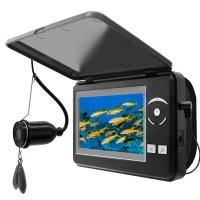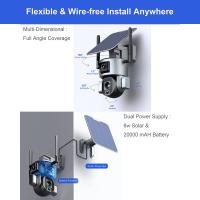How Long Does A Digital Camera Last?
How Long Does a Digital Camera Last? Understanding Lifespan and Factors That Impact It

Digital cameras have become indispensable tools for photographers of all levels, from amateurs capturing family moments to professionals documenting important events. One of the most common questions people have when considering the purchase of a digital camera, however, is: How long does a digital camera last?
The answer is not always straightforward, as the lifespan of a digital camera depends on several factors, including the model, usage, maintenance, and technological advancements. This article delves into the key factors that influence a digital camera’s longevity, what you can do to extend its lifespan, and how to determine when it’s time to upgrade your gear.
The Average Lifespan of a Digital Camera

While the longevity of digital cameras can vary, most consumer-grade models typically last anywhere from 3 to 5 years with regular use. Professional cameras may last a bit longer, but even high-end cameras have a limited life expectancy before the technology becomes outdated or the physical components wear out.
However, understanding the different elements that contribute to this lifespan can help you better care for your camera and determine when it may be time to consider an upgrade.
1. Shutter Count and Mechanical Wear
One of the most critical factors affecting the longevity of a digital camera, especially DSLRs and mirrorless cameras, is the shutter count. The shutter is the mechanism that controls the exposure time of an image, and it undergoes significant wear over time.
Each time you take a photo, the shutter is activated, and over time, this repetitive motion leads to mechanical wear. For most DSLR and mirrorless cameras, the shutter is rated for a specific number of actuations, usually anywhere between 100,000 to 300,000 shutter clicks. Once the camera reaches this threshold, the shutter may begin to fail, leading to issues with capturing images.
What to Do:

- Regularly Check Your Shutter Count: You can monitor your camera’s shutter count by using software tools or apps that read the metadata from your photos.
- Consider Professional Servicing: If your camera is nearing its shutter count limit, you can get it serviced, which may include replacing the shutter mechanism for a second life.
2. Battery Life and Battery Health
The performance and lifespan of your camera’s battery are also crucial to its overall longevity. Most digital camera batteries are rated for around 300-500 charge cycles before they begin to degrade. Once a battery's capacity starts to diminish, the camera may not perform as well, especially during long shoots or when using power-hungry functions like video recording or high-speed burst shooting.
While it’s not difficult to replace a battery, it can be an indicator of your camera's overall aging process, especially if it’s showing signs of general wear and tear in other components as well.
What to Do:

- Avoid Overcharging: Regularly charging your camera battery to 100% or draining it to 0% can reduce its lifespan. Instead, try to keep the charge between 20% and 80%.
- Replace Old Batteries: If your battery no longer holds a charge, you may want to buy a replacement, especially if you plan to keep the camera longer than the average lifespan.
3. Sensor Wear and Image Quality
The camera sensor is arguably the most important part of a digital camera, as it directly impacts the quality of your images. While sensors don’t physically “wear out” in the traditional sense, their performance can degrade over time. Dust, dirt, and environmental factors can impact the sensor's ability to capture sharp, clear images.
Moreover, image quality will inevitably degrade in comparison to newer camera models as sensor technology advances. As new generations of cameras come out with better sensors, your older camera will start to show signs of aging, such as lower resolution, higher noise levels, and less accurate color reproduction.
What to Do:
- Clean Your Sensor Regularly: Dust can accumulate on the sensor, affecting image quality. Cleaning your sensor carefully or having it professionally cleaned can extend its effective life.
- Consider Software Solutions: If your sensor starts to degrade, post-processing software can sometimes help mitigate noise and other image quality issues, but it’s not a permanent fix.
4. Lens and Optical Components
Lenses are another significant part of the camera system that can affect the overall lifespan of the device. While lenses themselves typically last for decades if well-maintained, the autofocus motors and other internal components can wear out, especially if they are used frequently.
If you're using a zoom lens, you might find that zooming becomes less smooth over time, or if you’ve dropped your camera or lens, you could see issues with alignment and focus. For fixed lenses, wear and tear is less of an issue, but they still remain vulnerable to impact, scratches, or environmental exposure.
What to Do:
- Store and Handle Carefully: Keep your lenses protected in a case or bag when not in use, and always be careful when changing lenses.
- Use Lens Filters: A UV or protective filter can safeguard your lens from scratches, dust, and minor impacts, prolonging its lifespan.
5. Software and Firmware Updates
Digital cameras have a significant amount of software running in the background, controlling everything from exposure settings to autofocus performance. As cameras age, software support may dwindle, which can affect performance. Manufacturers typically release firmware updates to address bugs, improve features, or fix security vulnerabilities.
However, over time, manufacturers may stop issuing updates for older models, and your camera might not be able to take advantage of newer software improvements or compatibility with new lenses and accessories.
What to Do:
- Update Firmware Regularly: Make sure your camera is always running the latest firmware to improve performance and fix bugs.
- Plan for Software Obsolescence: If your camera no longer receives updates, this could be a sign that it is nearing the end of its useful life, at least in terms of cutting-edge performance.
6. Environmental Factors and Usage Patterns
Environmental factors such as temperature extremes, humidity, dust, and moisture can affect a digital camera’s longevity. While high-end models are often built to withstand challenging conditions, most consumer-grade cameras aren’t designed to handle extreme environments. If you’re frequently shooting in harsh conditions, such as near the ocean or in dusty areas, your camera may suffer more damage over time.
Additionally, how often you use your camera can also impact its lifespan. Cameras that are used regularly tend to show wear more quickly, while those used infrequently may last longer but may also develop issues due to lack of use, such as battery degradation or dust accumulation inside the lens.
What to Do:
- Use Protective Cases: When shooting in harsh conditions, use weather-sealed cases or camera covers to protect against the elements.
- Store in Optimal Conditions: When not in use, store your camera in a dry, cool place away from dust and humidity.
When to Upgrade Your Camera
Despite proper care, there will come a point when your camera reaches its practical and technological limits. The decision to upgrade comes down to several factors:
1. Image Quality Decline: If you notice a significant drop in image quality, either due to sensor degradation or the camera no longer being able to keep up with modern demands (e.g., 4K video or high ISO performance), it may be time for an upgrade.
2. Outdated Technology: As newer models come out, your camera may not support the latest features like faster autofocus, better video capabilities, or higher resolution. If you find that your camera no longer meets your needs, upgrading can be a worthwhile investment.
3. Increased Repair Costs: If your camera is frequently in the shop for repairs, or if the cost to repair it exceeds the cost of buying a new one, it may be more economical to replace it entirely.
The lifespan of a digital camera varies depending on several factors, including how often it’s used, how well it’s maintained, and how advanced its technology is. On average, a camera may last between 3 to 5 years for consumer models, while high-end models may last longer if properly cared for. Regular maintenance, careful handling, and timely upgrades are key to getting the most out of your digital camera.
If you notice declining performance, outdated technology, or increasing repair costs, it may be time to consider replacing your camera. However, with proper care and attention, your camera can continue to serve you for years to come, capturing beautiful moments along the way.








































There are no comments for this blog.